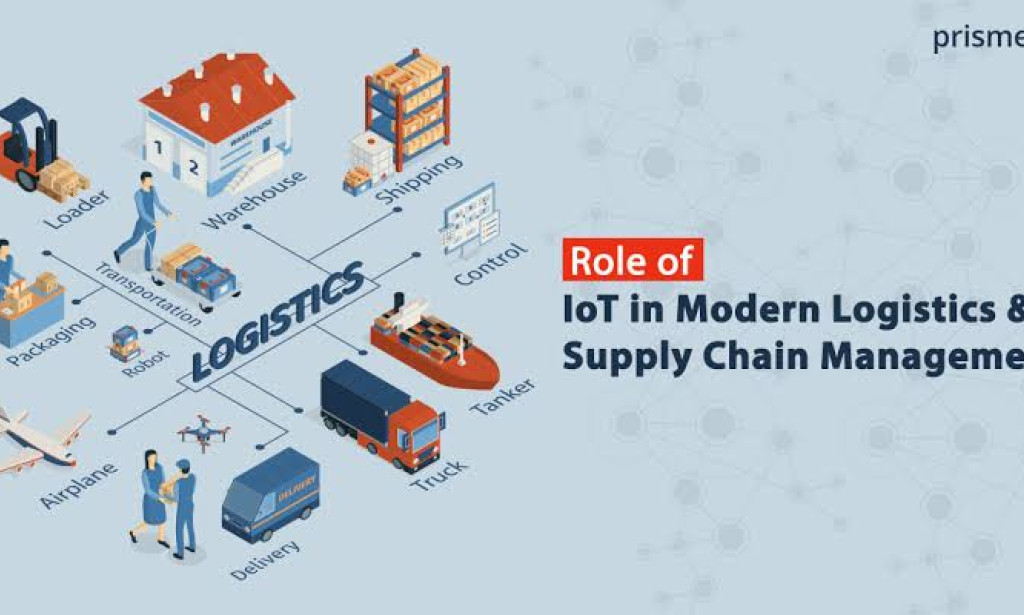The Internet of Things (IoT) is a network of interconnected devices that can collect and exchange data. IoT is being used in a variety of industries, including logistics and supply chain management.
IoT can be used to track the location of goods, monitor the condition of goods, and optimize supply chain operations. IoT can also be used to improve customer service and reduce costs.
How IoT is used in logistics and supply chain management
There are a number of ways that IoT is being used in logistics and supply chain management. Some of the most common uses include:
1. Tracking the location of goods: IoT devices can be used to track the location of goods as they move through the supply chain. This information can be used to improve delivery times and reduce the risk of loss or damage.
2. Monitoring the condition of goods: IoT sensors can be used to monitor the temperature, humidity, and other conditions of goods. This information can be used to ensure that goods are not damaged during transportation.
3. Optimizing supply chain operations: IoT can be used to optimize supply chain operations by providing real-time data on inventory levels, transportation routes, and other factors. This information can be used to improve efficiency and reduce costs.
4. Improving customer service: IoT can be used to improve customer service by providing real-time information on the status of orders. This information can be used to answer customer questions and resolve issues quickly.
5. Reducing costs: IoT can be used to reduce costs by improving efficiency and reducing waste. For example, IoT can be used to optimize transportation routes and reduce fuel consumption.
Benefits of using IoT in logistics and supply chain management
There are a number of benefits to using IoT in logistics and supply chain management. Some of the most significant benefits include:
1. Improved efficiency: IoT can help to improve the efficiency of logistics and supply chain operations by providing real-time data and insights.
2. Reduced costs: IoT can help to reduce costs by improving efficiency and reducing waste.
3. Improved customer service: IoT can help to improve customer service by providing real-time information on the status of orders.
4. Increased transparency: IoT can help to increase transparency in the supply chain by providing data on the location and condition of goods.
5. Enhanced security: IoT can help to enhance security in the supply chain by providing data on the location and condition of goods.
Challenges of using IoT in logistics and supply chain management
There are also a number of challenges associated with using IoT in logistics and supply chain management. Some of the most significant challenges include:
1. Cost: The cost of implementing and maintaining an IoT solution can be significant.
2. Security: IoT devices can be vulnerable to cyberattacks.
3. Privacy: IoT devices can collect a lot of data about individuals.
4. Complexity: IoT solutions can be complex to implement and manage.
Future of IoT in logistics and supply chain management
Despite the challenges, the future of IoT in logistics and supply chain management is bright. As the technology continues to develop, it is expected that IoT will become even more widely used in this industry.
IoT has the potential to revolutionize the way that logistics and supply chain operations are managed. By providing real-time data and insights, IoT can help to improve efficiency, reduce costs, and improve customer service.
Conclusion
IoT is a powerful technology that is being used in a variety of industries, including logistics and supply chain management. IoT can be used to track the location of goods, monitor the condition of goods, and optimize supply chain operations. IoT can also be used to improve customer service and reduce costs.
While there are some challenges associated with using IoT in logistics and supply chain management, the benefits of this technology are significant. As the technology continues to develop, it is expected that IoT will become even more widely used in this industry.
Additional resources
1. The Impact of IoT on Supply Chain Management - FM Logistic India
2. IoT in Supply Chain: Benefits, Challenges, and Real-World Examples - WebbyLab
3. IoT in Supply Chain: How IoT is Transforming Supply Chain Management - Magna Scientia

Nice write up
Thanks for this
You must be logged in to post a comment.